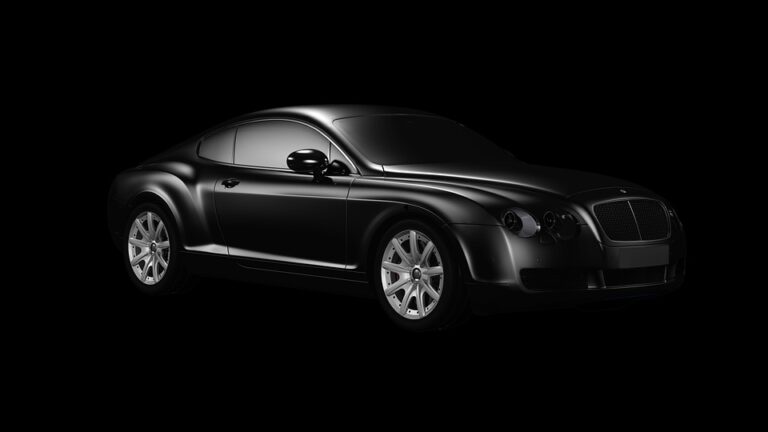The Intersection of Art and Engineering: A Deep Dive into Automotive Aesthetics
In the world of automotive design, the intersection of art and engineering is where creativity meets functionality. As cars evolve from mere transportation devices into works of art, understanding automotive aesthetics has become crucial for both enthusiasts and professionals in the automotive industry. This article explores how aesthetics influence automotive design, shedding light on the complex relationship between art and engineering.
The Role of Aesthetics in Automotive Design
Aesthetics in automotive design plays a pivotal role in consumer preference and branding. The visual appeal of a vehicle often influences purchasing decisions, as consumers are drawn to the cars that speak to their personal style and needs. Well-crafted designs not only enhance the vehicle’s look but also improve its functionality and aerodynamics.
Art as an Inspiration
Many automotive designers draw inspiration from various art forms. Whether it’s the fluid lines of a Renaissance sculpture or the vibrant colors of a modern painting, thoughtful design in vehicles transcends mere utility. The influence of art can be seen in:
- Sculptural Forms: Vehicles like the Tesla Model S and the Jaguar I-PACE exhibit a sculptural quality, demonstrating how curves can enhance aesthetics while also improving aerodynamics.
- Color and Finish: Brands like BMW and Ferrari utilize unique color palettes and finishes that evoke emotions, ensuring that their cars make a statement on the road.
Engineering Principles Behind Aesthetic Designs
While aesthetics are paramount, engineering principles underpin the design of a vehicle. The best automotive designs encapsulate both beautiful visuals and robust engineering:
- Aerodynamics: A sleek design reduces drag and increases efficiency. For instance, the Porsche 911 incorporates engineering insights about airflow and weight distribution to achieve not just beauty, but also superb performance.
- Materials Technology: The use of innovative materials, such as lightweight carbon fiber or aluminum, allows designers to create visually striking, yet structurally sound vehicles.
By merging art with these engineering principles, designers create automobiles that are not only appealing but also enhance the driving experience.
The Evolution of Automotive Aesthetics
Historically, automotive design has evolved dramatically. From the curvy and ornate designs of the 1950s to the minimalist and functional aesthetics of modern vehicles, trends reflect cultural shifts and technological advancements.
- Classic Car Design: Cars from the 1950s, such as the Chevrolet Corvette, emphasized chrome detailing and tail fins, representing post-war optimism and exuberance.
- Modern Design Language: Today’s vehicles favor clean lines and geometric shapes. This minimalist approach signals a shift towards sustainability, as seen in electric vehicles (EVs) that often adopt a less aggressive, more sophisticated look.
Iconic Automotive Designs
Certain automotive designs have achieved iconic status, representing the pinnacle of art and engineering collaboration:
- Ford Mustang: Launched in 1964, the Mustang’s muscular design and bold colors became symbols of freedom and rebellion, signifying the American spirit.
- Mercedes-Benz S-Class: Known for its elegance and luxury, this model consistently incorporates cutting-edge technology while maintaining an artistic aesthetic.
These vehicles not only serve their primary function of transportation but also embody lifestyle aspirations and design philosophies.
How Technology Influences Automotive Aesthetics
Advancements in technology have opened new avenues for car designers. Innovations in 3D modeling and printing enable the creation of intricate designs that were once impossible. Digital tools allow for rapid prototyping and adjustments, ensuring that aesthetic aspirations don’t compromise engineering integrity.
Sustainability and Design
The increasing emphasis on sustainability has also reshaped automotive aesthetics. Designers are challenged to create appealing vehicles that use eco-friendly materials.
- For example, some manufacturers are now using bio-based plastics and recycled materials, seamlessly integrating them into chic designs that resonate with environmentally conscious consumers.
Consumer Expectations and Automotive Aesthetics
Modern consumers expect vehicles to tell a story through their design. They are drawn to aesthetics that not only please the eye but also resonate with their values, such as sustainability and innovation. Here are some key consumer preferences:
- Customization: Many car buyers appreciate options for personalizing their vehicles, from paint colors to interior finishes.
- Brand Identity: Consumers often choose brands that reflect their lifestyle and values. A vehicle’s design is a critical component of brand identity.
Conclusion
The intersection of art and engineering in automotive aesthetics creates a dynamic field that continues to evolve. By appreciating this interaction, enthusiasts and professionals can better understand the significance of design in the automotive world. As vehicles become more integrated into our lives, the relationship between aesthetic appeal and engineering excellence will only deepen.
As you explore your next vehicle purchase or simply admire the artistry of automotive design, remember that behind every smooth line and bold curve lies a fusion of creativity and technology that drives the industry forward.
For more insights into automotive design trends, visit Buzzo.Live and stay connected with the latest in automotive news!


